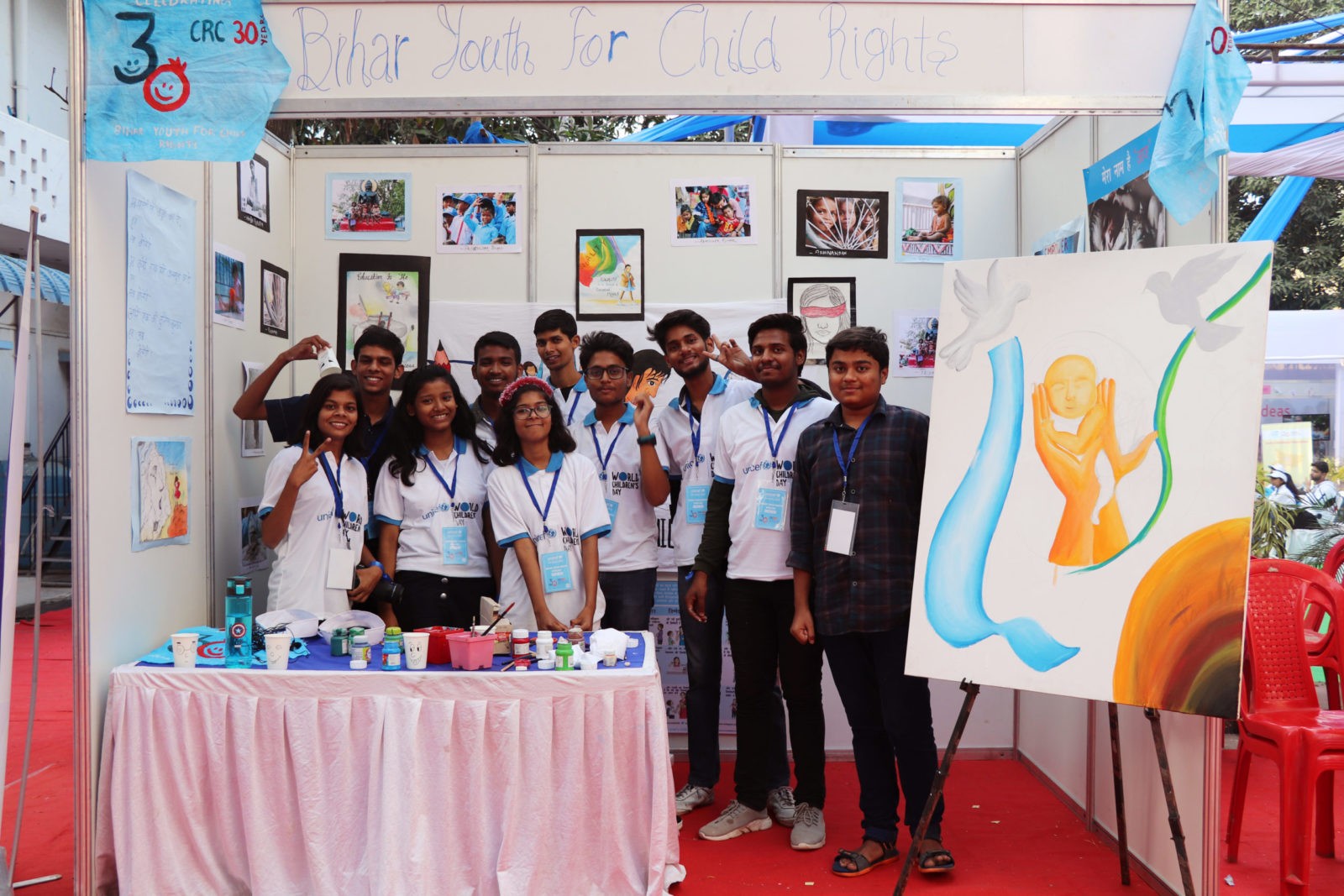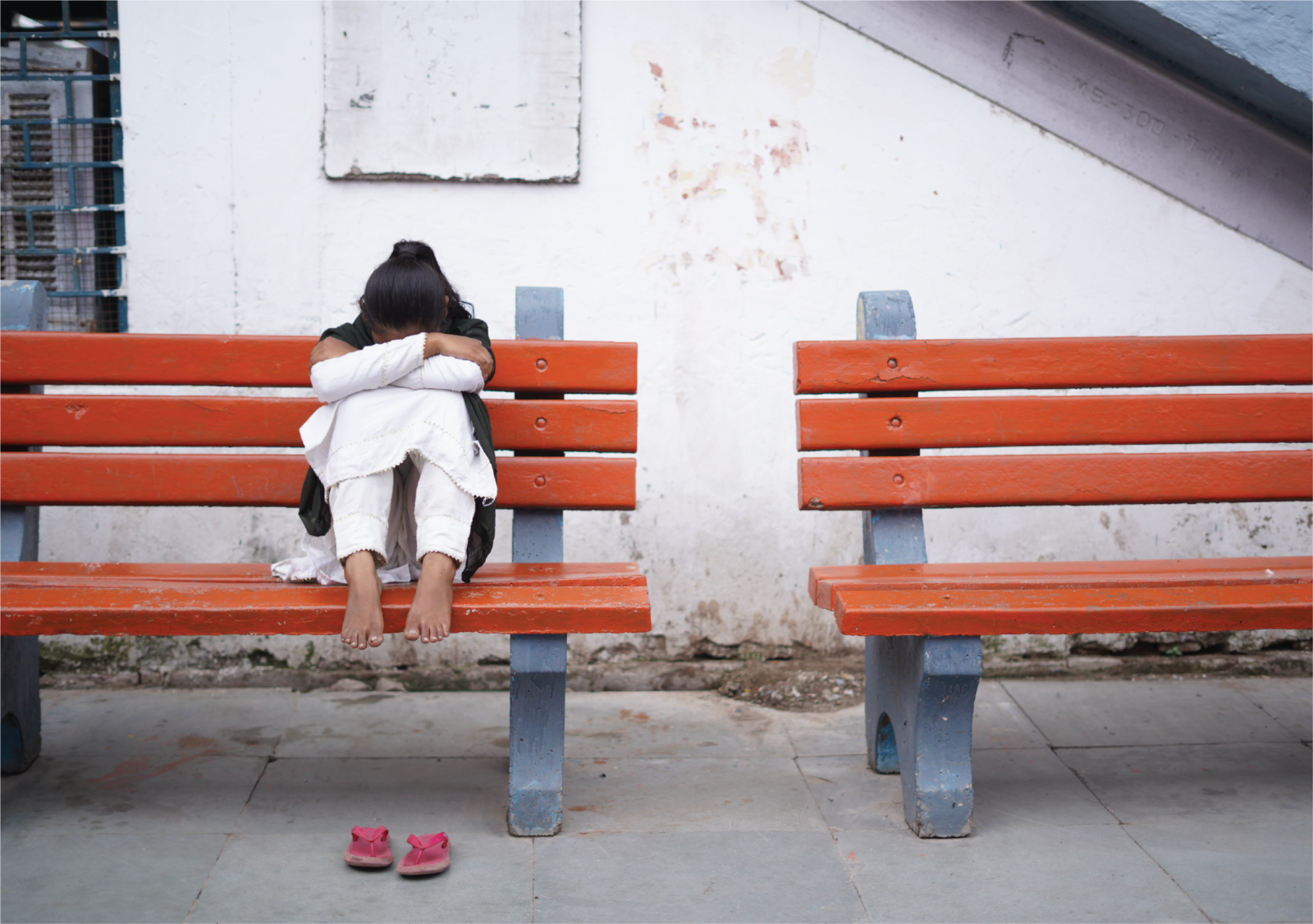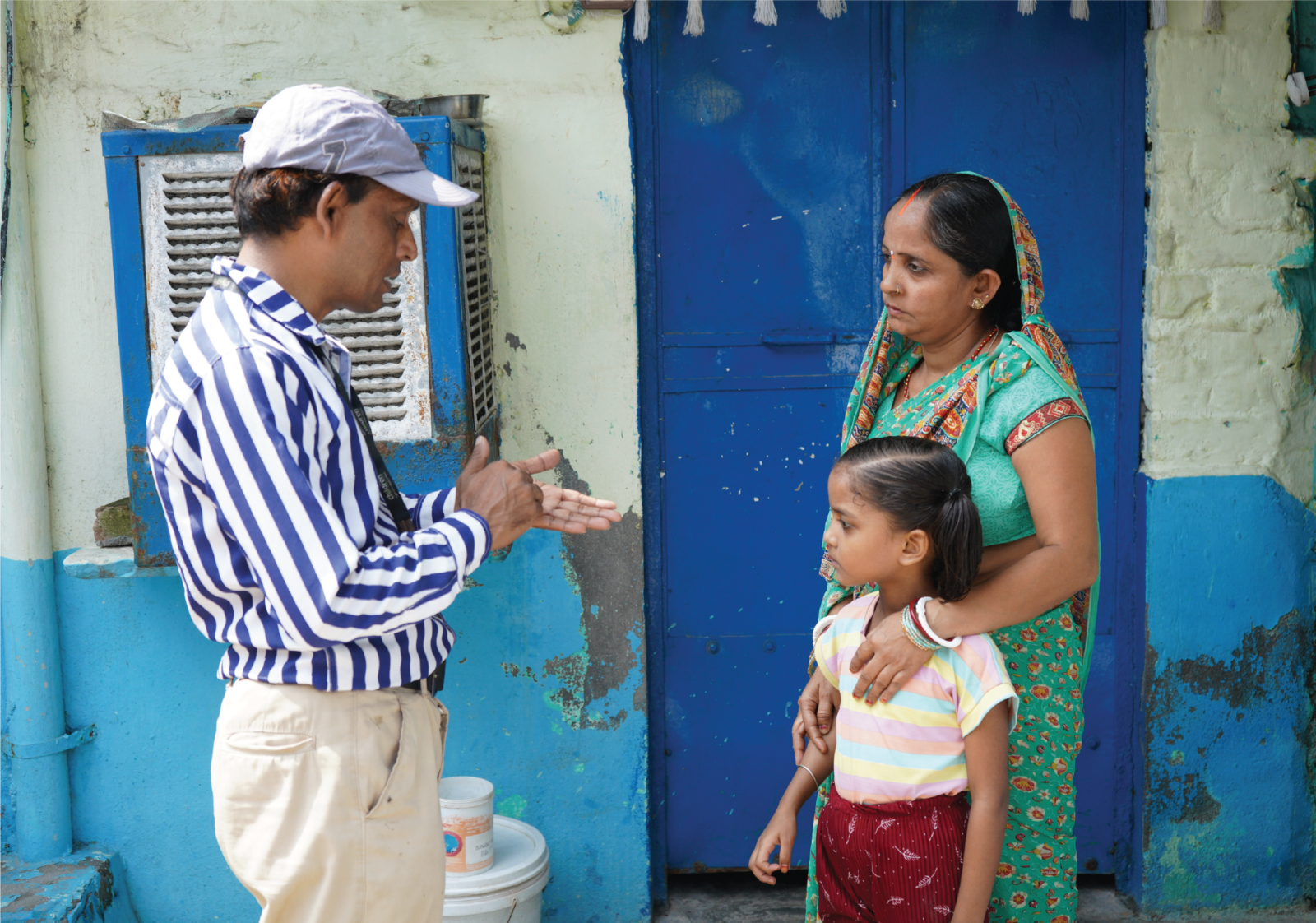“And one day she discovered that she was fierce, and strong, and full of fire, and that not even she could hold herself back because her passion burned brighter than her fears,” said Mark Anthony, almost as if he were describing Priyaswara.
Unlike many other girls, 17-year-old Priyaswara represents what many girls aspire to be. A quick-witted, self-assured, visionary, she is the founder of Bihar Youth for Child Rights (BYCR), along with a core team of 20 youth, who work diligently in the state of Bihar with the sole aim to champion child rights, with children as the protagonists for change.
Divya Kabadi, in a candid conversation with this firebrand, unravels why BYCR came into being, what pertinent children’s issues they have taken on, and how they plan to pave the way forward for the rights of children.
Q)It is great having to speak with you today; do begin by telling us a little bit about yourself and your work.
Ans: My name is Priyaswara; I took my 12th grade state board examinations this year. Right from my childhood, I have had two interests that are close to my heart—filmmaking, photography or as you may call it digital art, and the rights of children. I have been engaged in some or the other activity related to child rights right from the 5th grade. One of the first events that I attended was a workshop conducted by UNICEF in association with the Bihar Government, back in 2013. The workshop was about educating children about their rights and informing them about available government policies and schemes in a simple language, that could be easily understood. I was one of the two children who represented Bihar in a UNICEF-organised called ‘Yuva Program.’ I had the opportunity to interact with Ms. Henrietta H. Fore, executive director, UNICEF. Today, I have 20 documentaries to my name. Our movie, Gelotology—a science of laughter, won the Jury Special Mention Award at the 9th National Science Film Festival, and our movie on the 2019 Patna floods, titled ‘The unknown city: my own flooded city’, was recognized in several film festivals too. That is all about my work and me; I have constantly tried to keep myself engaged in these two fields.
Q)How did Bihar Youth for Child Rights (BYCR) come into being?
Ans: From the very beginning, at a personal level, I had completely immersed myself in the subject of child rights. I would actively participate in several workshops conducted by local and national non-government organizations; this helped me get a much deeper understanding of major issues under the child rights umbrella, such as child marriage, child labour, and the dowry system. However, the turning point, which led to BYCR, came in 2018 when I attended a workshop conducted by UNICEF for all the social media influencers in Bihar. There were several discussions in that workshop surrounding child rights and how we could use social media to educate and spread awareness about child rights. After I returned from the workshop, I thought to myself that, essentially, it is the adults who are driving the conversations around child rights. Children themselves did not have a platform to express their thoughts and concerns, and they were not actively involved in this conversation; this thought was the germ of an idea. I shared this idea with my friends on our Whatsapp group. The 20 of us decided to make more productive use of our group; we got together and started BYCR. When we started off, our aim was to make each child aware of his/her rights. Now, if you simply step out and ask children what they think their rights are, they will not be able to say much; however, if you ask them specifically, for instance, do you think you should be able to play in a safe environment? They will be more responsive to that. We want to educate them and spread awareness among them in a simplistic language. Over time, we have had a few children come and go to BYCR, but our core team of 20 remains unchanged.
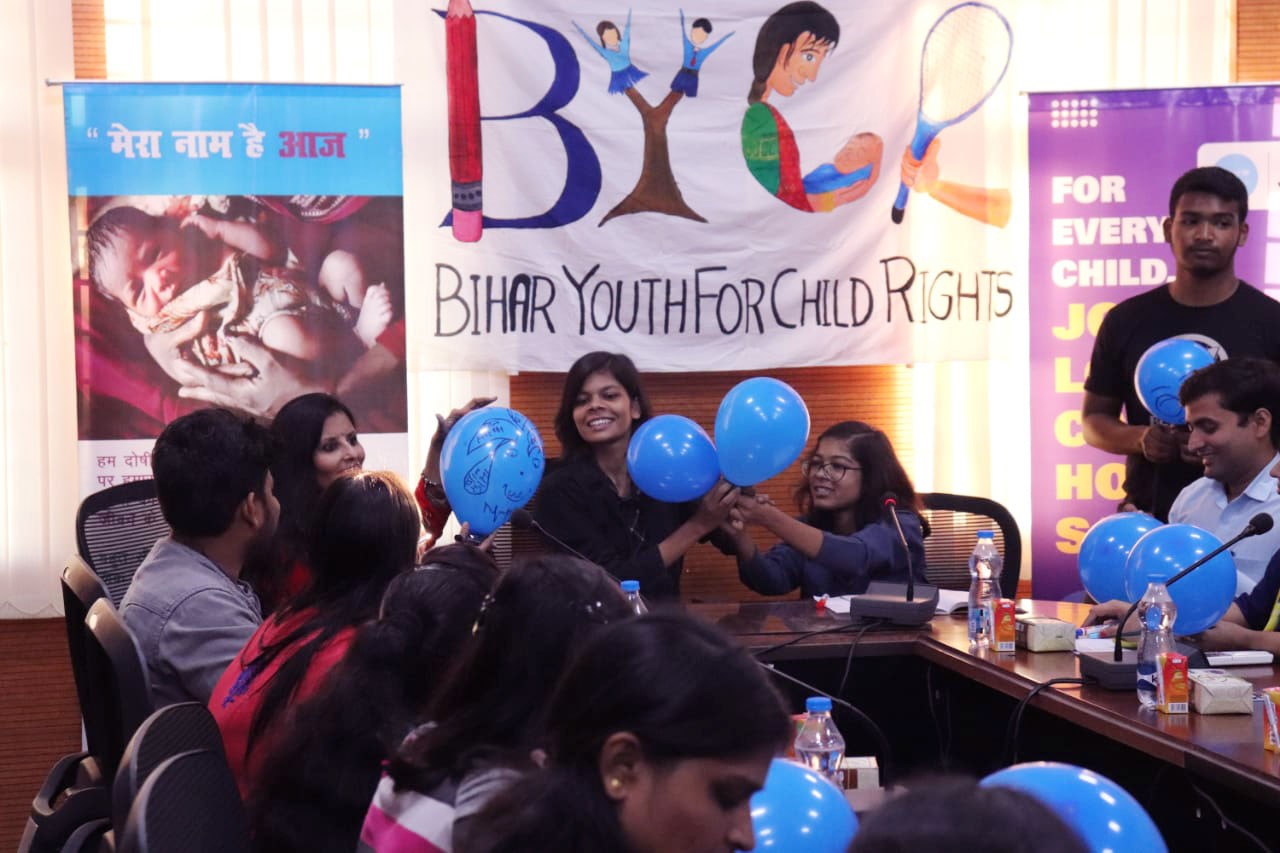
Q)What does BYCR aim to achieve through its activities?
Ans: When you talk about child rights, children from both privileged and unprivileged communities are completely unaware of their rights. In the unprivileged communities, the unawareness is spread to a large extent, but in the privileged communities, too, there isn’t much awareness. Accordingly, our first aim was to create a platform using social media where we as children talk about our rights and our concerns and the adults listen. We wanted to create a platform where children are having conversations about their concerns, and where children themselves think of solutions for their problems.We noticed that although the issues are centred on children, while plotting down solutions and implementing them, the children are somehow left on the sidelines; therefore, our second aim was to improve children’s participation in discussions and implementation of solutions.
We want to use art to engage people in the conversations that we are having. We have been using paintings, films, poems, and songs to grab people’s attention and to get them talking about child rights. Lastly, when a child witnesses another child being forced into labour, we want to provide a safe space for him/her to share what they witnessed. We want to help them know that in case they see injustice happening before them, where can they go and talk about it, what are the next steps that they should take.
Q) What is the current scenario like in Bihar?
Ans: Originally, I am from Gopalganj, a town in Bihar, but we moved to Patna in 2008 for my education. Back in my town, child labour is fairly ‘normal.’ In fact, it is positively encouraged for children to start looking for work between the ages of 10-12 years, or to join their parents in their work and bring money home. I personally witnessed children working at construction fields, but I didn’t think much about it then. I didn’t know it was criminal for children to be working at such a young age. So, it is not only prevalent in towns it is almost normalized.
Another instance that would highlight the prevalence of chid rights violations was when we were shooting a documentary for the Centre for Catalyzing Change, the subject of the documentary was child marriage and dowry. We shot for the documentary in both urban and rural schools across Bihar. While shooting for this documentary, I saw girls of my age being married off; the girls didn’t complain about this because their in laws allowed them to attend school. A criminal offense like child marriage being committed with such disregard for the law shows that child rights violation is prevalent across the state in both urban and rural areas, equally, and speaks for what the current scenario is like in Bihar.

Q) What do you think are a child’s unalienable rights? Moreover, when did you realize that child rights is a subject that you want to delve deeper into?
Ans: I think that access to a safe and friendly environment is the first and foremost right of a child. A positive and encouraging environment brings out the best in a child and helps his/her development. I cannot stress enough the importance and compulsion of a formal education for each child, and by that I don’t mean an expensive one, rather a basic but wholesome education. Other than that, of course, access to healthy nutritious food is also a child’s right. In fact, the nutrition that children receive is the foundation of all their actions; only if they are healthy will they benefit from a good environment and a formal education. Along with that, I also think understanding and supportive parents who help the child achieve his/her true potential help a great deal.
As for my inspiration or what motivated me to learn more about child rights, as I mentioned earlier, I am originally from Gopalgunj and moved to Patna for my education; however, even today for any major festival, like Chhatt pooja, we travel back to our hometown. So, back in that time, in school I was learning about child rights and menstrual hygiene, but once I returned to my hometown, I would see the exact opposite of what I was being taught. For instance, I learnt in my school that child marriage is a crime, but here in my hometown, an underage cousin sister of mine was being married off against her will right before my eyes. Naturally, the conflict was too huge for me to ignore, so I did bring it up with my mother, but she brushed it off saying this is normal here, this is their way of life. We can’t interfere in their matters.
Incidents such as these triggered me to at least bring about change at a personal level. One of my friends was going to get married right after her 10th grade examination. She shared with us friends that she didn’t wish to get married; instead, she wanted to study further. So, I asked a few people who had conducted workshops in our school to help me. They told me that I should first try speaking to the parents directly if they still go ahead with the marriage, then they could step in. I knew her parents wouldn’t take my words seriously, so I asked my mother to speak with them. The girl’s parents felt offended that outsiders were interfering in their decision regarding their daughter and simply continued with the wedding preparation. I then spoke to Ms. Nipurnh Gupta, communication specialist, UNICEF, Bihar, mentor of BYCR; she coaxed my mother into not giving up so easily and trying to speak to the girl’s parents once again. This time, my mother asked them that if they couldn’t stop the wedding completely, they should at least consider postponing it by two years, allowing her to complete her matriculate. My mother also stressed on the fact that if she does complete her matriculate, she may get a job at the anganwadi (a centre providing care for mothers and young children in a rural area) which will help her family a great deal. Consequently, my friend’s wedding wasn’t called off altogether, but it was postponed by two years, which helped her complete her basic education and get a job
Q)Tell us about the activities and initiatives BYCR undertakes to create awareness on child rights.
Ans: We kicked off BYCR in 2018 on World Children’s Day by participating in the Baal Yatra, a walk to highlight child rights; it was the first activity that we were a part of, but UNICEF had conducted this activity. The next event on our calendar was one that was planned completely by our team. On World Menstrual Hygiene Day, we held a painting exhibition at the Science Centre in Patna. Our motive was to depict challenges and myths surrounding menstrual hygiene through paintings; the event was called Painting on Period. Since it was an all-day event we had a footfall of around 200-300 people. We received mixed reactions to that event. Some people appreciated our intent and thought, while some others steered clear of our exhibition completely out of shame and disgust.
The second event that we conducted was Baal Adhikaron pe Baat. This event took place in the slum areas of Boring Road, Patna. We had nearly 50-75 children and their parents gathered for this event. With the children, we played games that had an element of child rights awareness, and we showed a couple of films to the parents. The films were about the importance of vaccination and the use of Childline 1098. We wanted to educate the parents too about what constitutes child rights violations and what they should do if they see any harm being done to a child.
After a few more events, we are now in the middle of a lockdown, but we have continued with our activities. We held a webinar wherein we spoke about how children are dealing with anxiety and social distancing from friends and another one on menstrual hygiene. The goal of this webinar was to continue the conversation that we started with the exhibition and to invite boys to openly join the conversation and bust the taboo. I would also like to add that in all the events that we have held till date, we have always had an expert onboard to guide us.
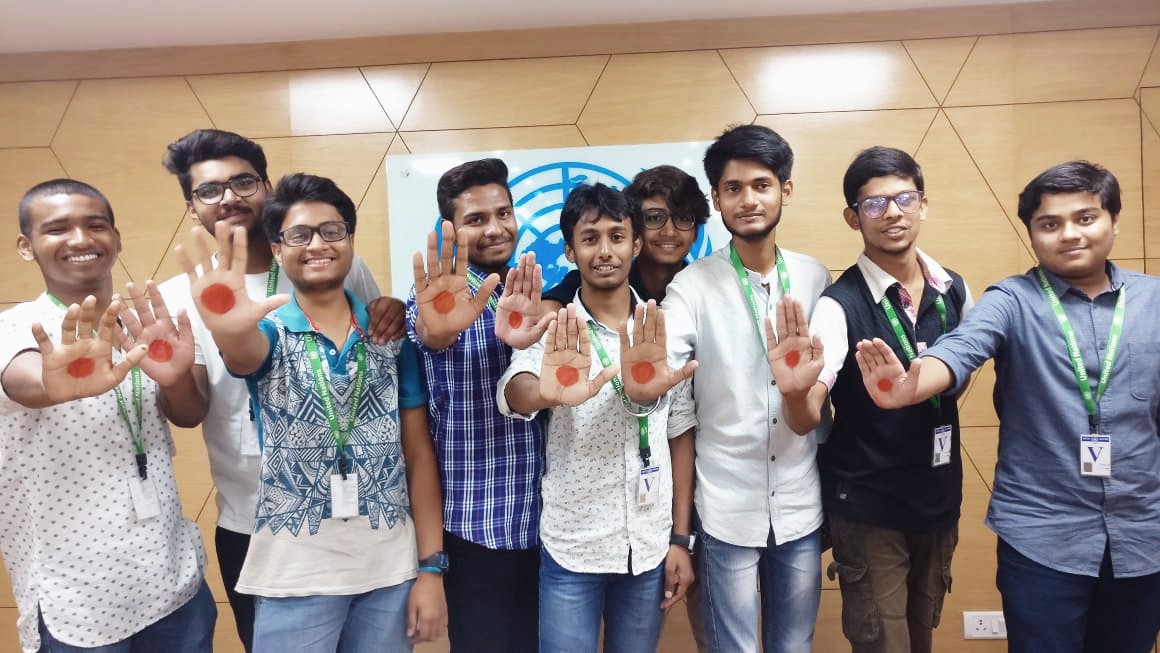
Q)BYCR has focused tremendously on menstrual hygiene, which is evident from your social media pages and the events that you spoke about. Why did you choose to highlight this issue the most?
Ans: I think menstrual hygiene is closely related to the health of us teenage girls and good health is an important pillar under child rights. Also, our personal experiences from our school motivated us to talk more about this topic, for instance, whenever there was a demonstration or discussion on menstruation in our school, oddly, the boys were taken to a separate floor and the girls to a separate floor. Incidents such as these planted a thought of shame and taboo in our minds; however, more discussions around this subject and more workshops made us realize that there is nothing shameful about menstruation, but I have to admit getting comfortable around it didn’t come easily to me either. I had decided to make a video about menstrual hygiene myself and needed the help of a couple of boys in our group for shooting that video; however, ironically enough, I found myself hesitating to ask for their help, thinking how am I going to tell them that this is the subject of our video. So, this hesitation was exactly what we wanted to end, which is why we held events like Paint for Periods and the Red Dot campaign on our social media. In fact, we plan to take this campaign a step forward after the lockdown. We plan to conduct a menstrual hygiene demonstration in our school but with the boys in the same room this time. Essentially, we aim to end the hesitation surrounding menstruation and to bust the myths around it.
Q)Getting featured by UNICEF India speaks volumes about the impact of your work, but what has been the response of the people and how supportive have the local administrations been?
Ans: Response from the locals has been good, I mean, some are supportive and some think that we won’t be able to achieve much with our endeavours. However, we constantly attempt to include the locals in all our awareness campaigns. An example would be a video that we shot in a park in our area; it was an immunization awareness video wherein we spoke to the locals to see what they understand by it. As for support from the administration, we haven’t held an event of that scale, yet, where we are required to seek permission from the administrators. In the future, however, we do plan to conduct a seminar with the local police authorities and the children. With that seminar, we aim to bridge the communication gap between children and the police; we wish to start a dialogue between the two, because there is an inherent fear in the minds of children regarding the police, and it is important that we initiate a dialogue. When children stop fearing the police, only then will they approach the police, fearlessly, whenever they witness any injustice or harm happening to other children or even to themselves.
Q)You mentioned a communication gap between the authorities and the children in addition to that do you believe that there is a gap between policies being announced and their implementation?
Ans: Definitely, there is a gap between announcing the policies and children actually benefitting from these policies, and even if they do reach the children, it only helps a small number of children; so yes, there is a gap. I believe a reason for these gaps is that even when they are implemented, they are not continued in the long run; they are dropped mid way. Another reason, I feel, is the lack of information. Many a times the beneficiaries of a particular policy are unaware about its existence, for instance, portals on career guidance or skill development. There are several portals that serve to educate teenagers and their parents about the opportunities, but only a handful of people know about them.
Q)What ideas/recommendations do you have in order to bridge the gap?
Ans: We at BYCR believe that information should be conveyed right at the community level, what I mean is, schools are an important aspect to spread information, but so are the communities. Unfortunately, there are families who can’t afford to send their children to schools; in that case, the community becomes the only source of information for these families and their children. If the aim is to effectively convey information whereby it reaches its beneficiaries, a community centre is the best place to start. One could hold a weekly seminar or workshop at such community centres to make sure that the people in the community are kept abreast with all the relevant information.




